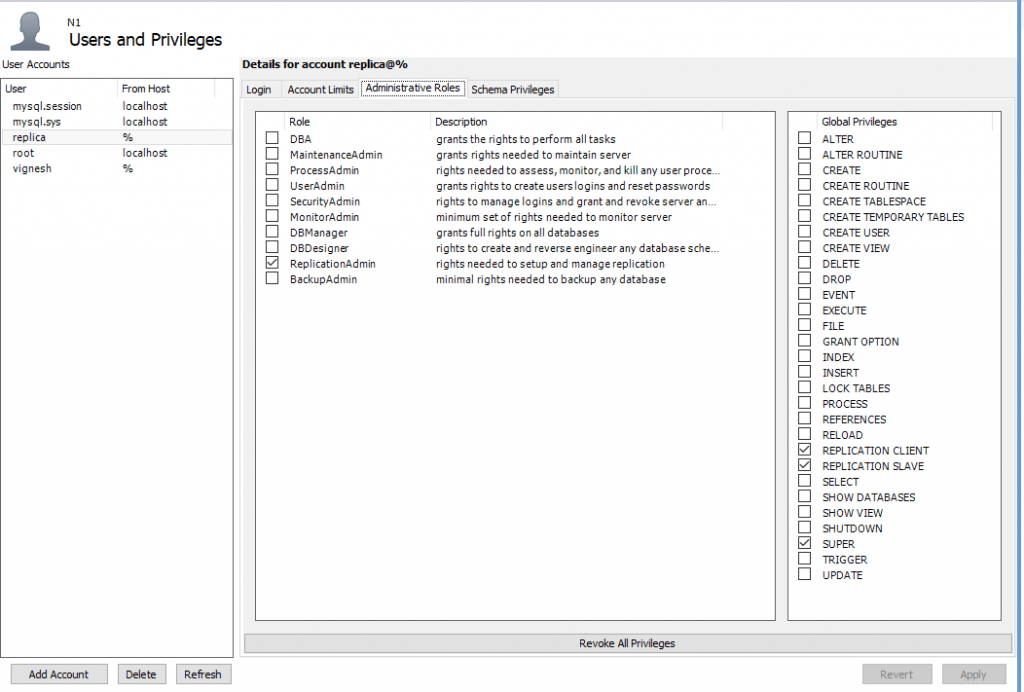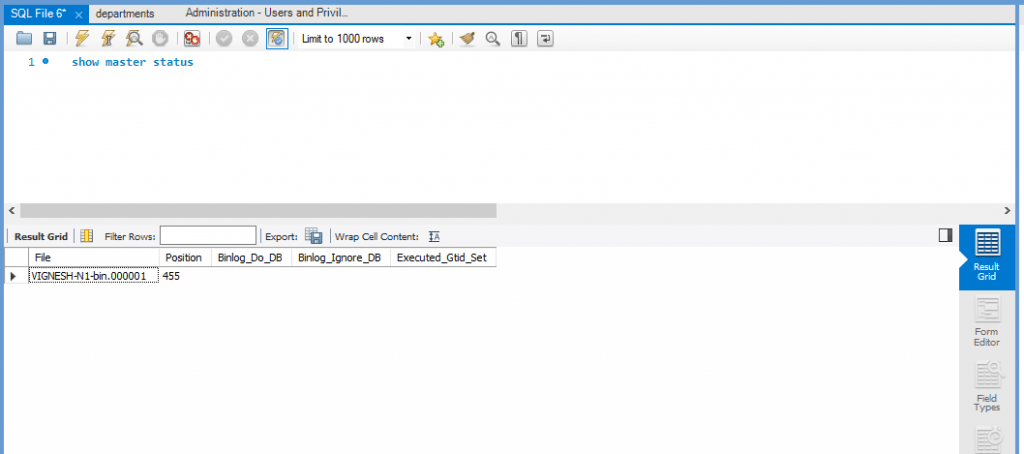Replication enables the data from one MySQL database server (master)to be copied to one or more servers ( slaves ). MySQL Replication is Async by default; slaves do not need to be connected permanently to receive updates from a source.
Replication can be configured for all the databases, selected databases, or even a tables within the database
Advantages of replication
Scale-out – This will act as a load balancer for the MySQL server, the reads can be spread among the multiple replicas to improve performance. All writes will be performed on the master server and the reads may take place in one or more slaves. This will improve the Reads dramatically as it is spread across multiple nodes and also the writes as the master is dedicated for the Updates.
DR Copy – The replication can be used to setup the DR copy to the long distance data server ( remote site )
Consistent Backup without Locking the Master Server: Replica nodes can be used to take the backup, the replica can be paused and take the backup and restart the process
Setup
With the sudo privilege install the MySQL Server on two nodes
sudo apt-get install mysql-server
Create User on Master Server
Pick one server as a master server and create an user and who can login from any computer ( % ) and Enable the ReplicationAdmin role to the user
shell> GRANT REPLICATION SLAVE ON *.* TO 'replica'@'%' IDENTIFIED BY 'password';
Follow up with flush privileges
shell> FLUSH PRIVILEGES;

Enable the Bin Log mode
Bin Log or Binary Log of the MySQL Server contains “events” that describe database changes such as table creation operations or changes to table data.
It also contains events for statements that potentially could have made changes (for example, a DELETE which matched no rows), unless row-based logging is used. The binary log also contains information about how long each statement took that updated data.
For replication, the binary log on a replication source server provides a record of the data changes to be sent to replicas. The source sends the events contained in its binary log to its replicas, which execute those events to make the same data changes that were made on the source.
Note : Running a server with binary logging enabled makes performance slightly slower.
To enable the binary log, start the server with the –log-bin=<base_name> option. If no base_name value is given, the default name is the value of the –pid-file option (which by default is the name of host machine) followed by -bin.
If the base name is given, the server writes the file in the data directory unless the base name is given with a leading absolute path name to specify a different directory. It is recommended that you specify a base name explicitly rather than using the default of the host name
Edit the mysql configuration files (/etc/my.cnf) and add below lines
log-bin=nodenameSet the Server ID
server_id is set to 0 by default, On a replication source server and the replica servers you must specify the server_id to establish the unique replication ID in the range from 1 to 2^32
So to the master set the ID to 1 and for all replicas set unique server ID starts from 2
shell> set global server_id =1To confirm the Server ID run the below query
shell> show variable where variable_name = 'server_id';Then Restart the MySQL Server
sudo service mysql restartGet the master status and get the position
shell> show master statusRun the above query and get the position

Configuring the Slave
Take the dump of the MySQL Server and restore the database using the dump in the slave node
Stop the slave
shell> stop slaveRun the below query replacing the value to match with your configuration to designate the current node as slave to the master, and provides the credential details and also let the slave where to start replicating from
change master to master_host = 'vignesh-n1',
master_user = 'replica', master_password='admin@123',
master_log_file = 'VIGNESH-N1-bin.000001';Activate the Slave
shell> START SLAVE;Get the status of the slave
shell> SHOW SLAVE STATUS\Gif there is an issue in connecting, you can try starting slave with a command to skip over it:
shell> SET GLOBAL SQL_SLAVE_SKIP_COUNTER = 1; SLAVE START; Also published on Medium.



